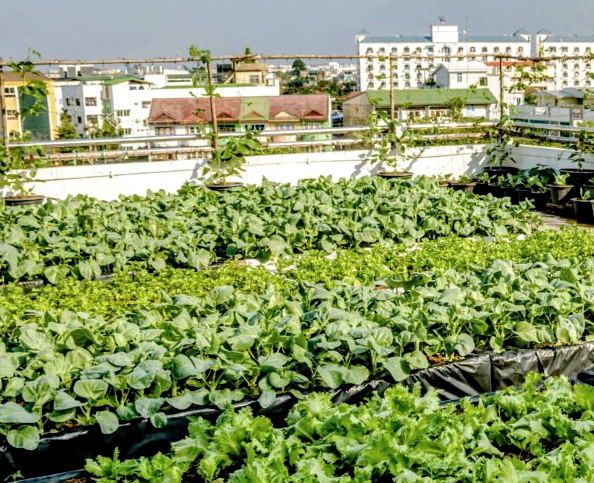Based in «Growing Urban Agriculture», of Esther Ngumbi, «Innovative Agriculture», published at Grace Communications fundation, «Boston Medical Center Puts Down Roots For Patient Health», published at WGBH, Vertical farming of Dickson Despommier, Brooklyn grange, Growing home, and Bonton farms.
In comparation with modern extensive cropping, small horts looks out of time, and in case of urban horts it looks only a hobby. Is it in this way?
The FAO reports that 800 million people worldwide grow their own fruits or vegetables, or raise animals in cities, accounting for 15-20 percent of world’s food production. It is mainly a practice of rural zones, because density of cities difficulties to find spaces where to crop. But urban farming has renewed attention because the different approaches to it.

The urban cropping can be pointed from a 0-km vegetable production to a social improver, but also there are people looking to the future points it as a solution to feed the no stopping growing population. By the year 2050, nearly 80% of the earth’s population will reside in urban centers. Applying the most conservative estimates to current demographic trends, the human population will increase by about 3 billion people during the interim. With current farming techniques, it would be need a new cropping land of size of Brasil to feed them, but over 80% of the land that is suitable for raising crops is already in use.
Meanwhile arrives the future, urban farmers can be found on city rooftops, in small backyard plots, and in vacant lots growing food for their communities. Farms in urban areas are becoming increasingly prevalent, providing food for high population areas (often low-income areas), beautifying communities and bringing people together to work with their neighbors. Urban cropping improves neighbourhood, and in this line, even there are experiences of social integration based in urban crops, as the Bonton farms, a community where 85% of men have been to prison, poverty is rampant and jobs are scarce. Bonton is also a “Food Desert”, where access to healthy foods is non-existent.

